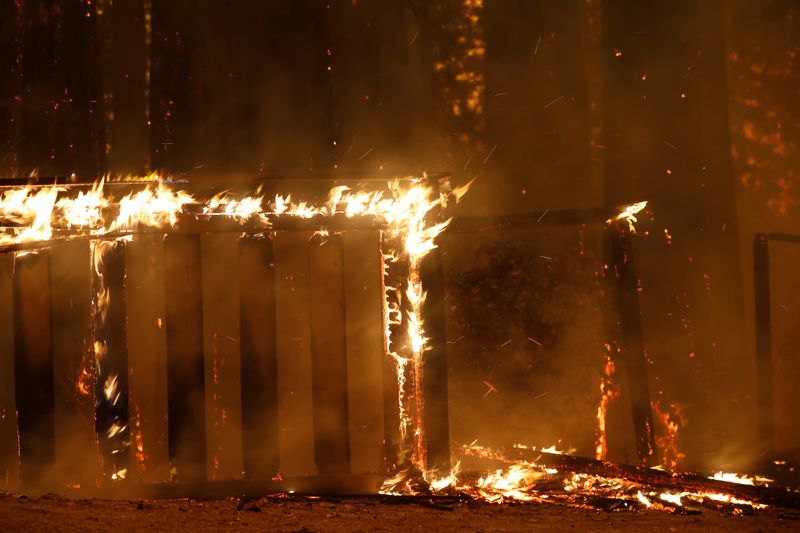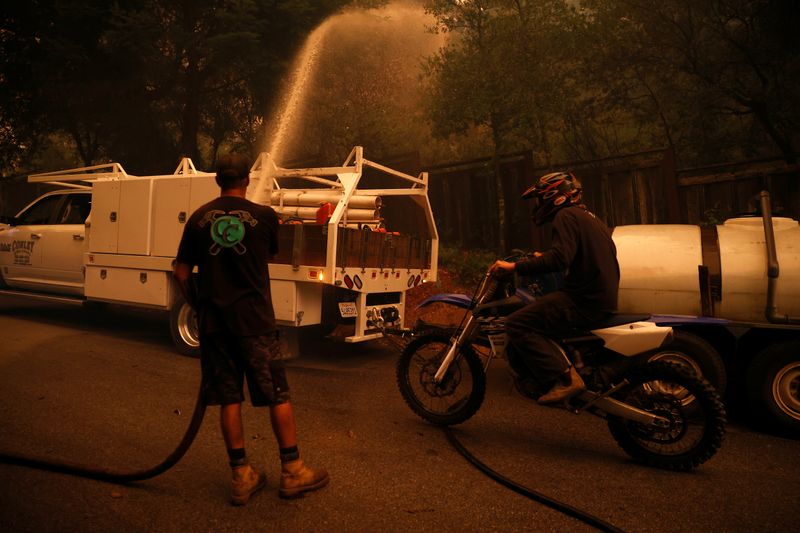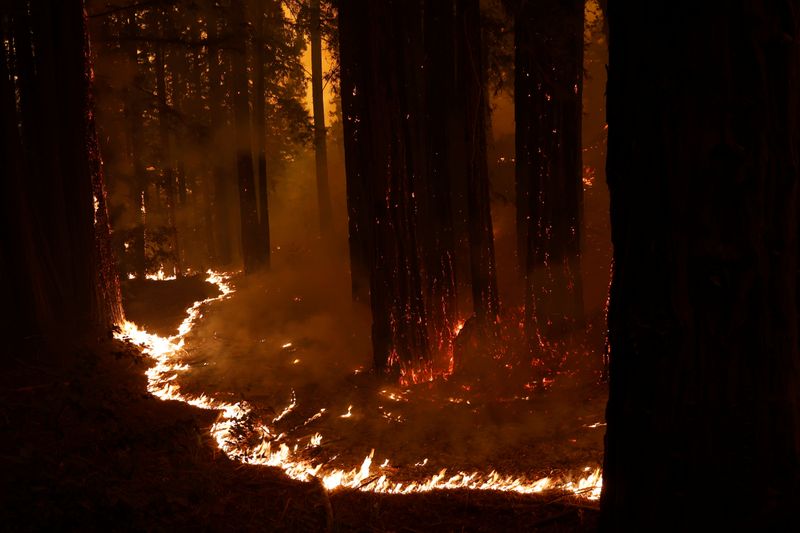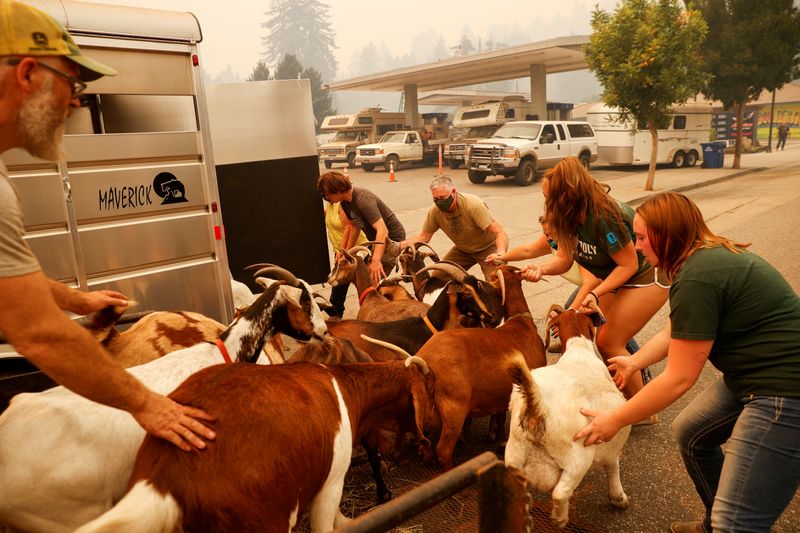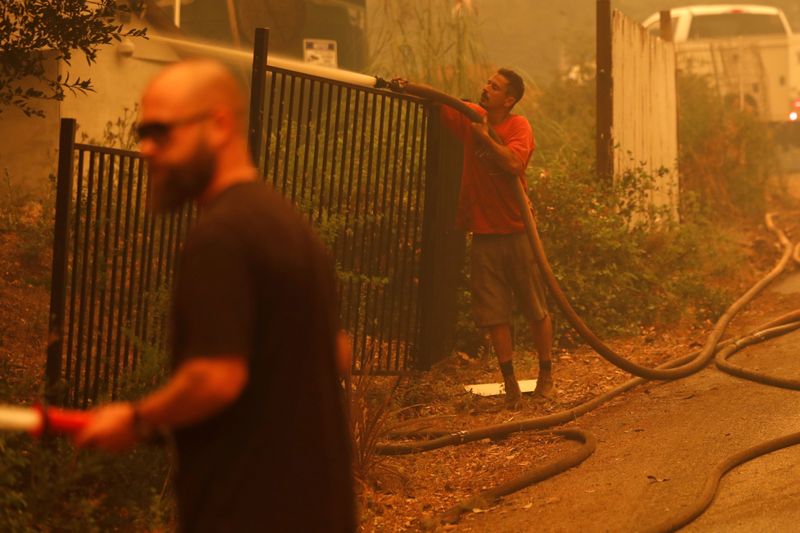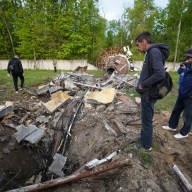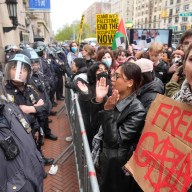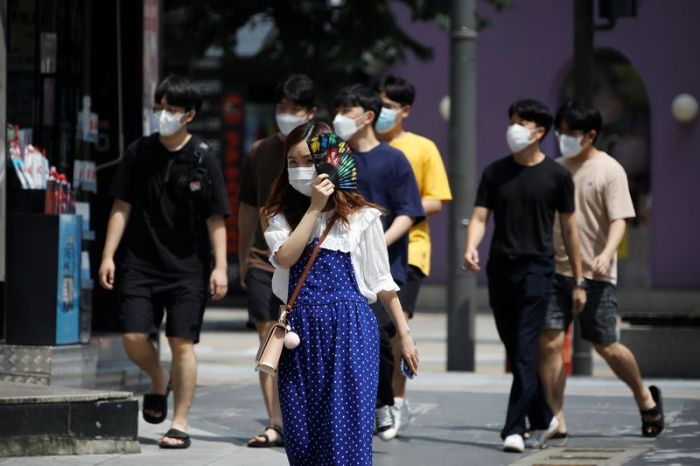BOULDER CREEK, Calif. (Reuters) – Tens of thousands of displaced Californians huddled under evacuation orders in the midst of a heat wave and a pandemic on Thursday as lightning-sparked firestorms raged through dry brush, grass and chaparral around San Francisco Bay.
With firefighting resources strained to their limits by the heaviest spate of incendiary lightning strikes to rake California in more than a decade, officials scrambled to bring in reinforcements sought since Wednesday from out of state.
An estimated 11,000 lightning strikes, mostly in northern and central California, ignited more than 370 individual fires this week, spawning nearly two dozen major conflagrations that threatened thousands of homes and prompted mass evacuations.
“Everything is gone,” resident Nick Pike told CapRadio in Sacramento after he and three neighbors lost their homes near the town of Vacaville, about 55 miles (88 km) northeast of San Francisco.
As of Thursday, the biggest fires had collectively scorched more than 500,000 acres, or 780-plus square miles, an area well over twice as large as New York City’s entire land mass. Scores of homes and other buildings were left in ruins. The Associated Press reported that the wildfires claimed at least five lives, citing statements by authorities.
A utility worker died on Wednesday while on duty helping clear electrical hazards for first-responders. Earlier the same day, the pilot of a firefighting helicopter contracted by the state was killed in a crash during a water-dropping mission in Fresno County.
HARD TO BREATHE
Plumes of smoke and ash fouled air quality for hundreds of miles around fire zones, adding to the misery and health risks of residents forced to flee or those stuck inside sweltering homes that lacked air conditioning.
One of the greatest threats was posted by a cluster of fires roaring through the Santa Cruz mountains south of San Francisco, forcing some 22,000 residents to flee their dwellings and destroying at least 20 structures, according to the California Department of Forestry and Fire Protection (CalFire).
Big Basin Redwoods State Park, California’s oldest state park with redwood trees up to 2,000 years old, sustained extensive damage to historic buildings, the state parks department said. The nearby community of Boulder Creek, the park’s unofficial gateway town, was also evacuated.
As the fire moved south, the University of California at Santa Cruz called for voluntary evacuations from its campus on the northern flank of that coastal city.
To the north, another group of fires raced through hills spanning several counties in northern California’s wine country, about 35 miles (56 km) southwest of Sacramento, destroying more than 105 homes and other structures, CalFire said.
A number of wineries in the region were forced to cease operations mid-harvest as evacuations expanded in Napa and Sonoma counties, the San Jose Mercury News reported.
Collectively known as the LNU Complex Fire, those blazes had blackened 131,000 acres (53,000-hectares) by Thursday, a day after residents of communities overrun by flames had to flee for their lives, four of them suffering burns.
Another group of fires dubbed the SCU Lightning Complex grew to about 140,000 acres on Thursday some 20 miles east of Palo Alto, with containment reported at just 5%.
The blazes raged amid a record-breaking heat wave that has baked California since last Friday, resulting from a dome of atmospheric high pressure hovering over the American Southwest.
Meteorologists say that same high-pressure ridge has also been siphoning moisture from remnants of a now-dissipated tropical storm off the coast of Mexico and creating conditions rife for thunderstorms across much of California.
Most of the precipitation from those storms evaporates before reaching the ground, however, leaving dry lightning strikes that have only added to what was already a volatile wildfire season.
The American Lung Association warned on Thursday that the coronavirus pandemic has considerably heightened the health hazards posed by smoky air and extreme heat.
Inhaling smoke and ash can worsen the weakened lungs of people with COVID-19 and undermine the natural defenses of those who do not have it, said Dr Afif El-Hassan, a physician spokesman for the lung association.
(Reporting by Stephen Lam in Boulder Creek, Calif.; Writing and additional reporting by Andrew Hay in Taos, N.M., Steve Gorman in Los Angeles and Kanishka Singh in Bengaluru. Editing by Frances Kerry, Cynthia Osterman & Robert Birsel)

